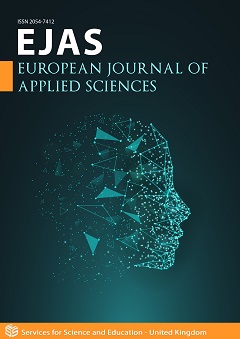Bioaccumulation of Heavy Metals in Some Selected Benthic Macro-Invertebrates of River Owo, Agbara, Ogun State, Nigeria
DOI:
https://doi.org/10.14738/aivp.121.16532Keywords:
Industrial and domestic effluent, Heavy metals, monitoring, pollution, bioaccumulation, benthic macro-invertebratesAbstract
Increasing Industrialization, and urbanization, along with the violation of the effluent disposal norms, has caused heavy contamination of water bodies. Macro-invertebrates and other aquatic biota in the vicinity of industrial areas and estates are a good indicated for monitoring the level of pollutions. Heavy metals like cadmium (cd), chromium (cr) have proven to be persistent pollutants. Though present in traces and being lipophilic, heavy metals tend to bioaccumulate and biomagnified. Their accumulation and biotic tissues cause toxic effects. The study was carried out the current levels of total cadmium, chromium, Zinc, copper, Nickel, lead, mercury, and cobalt accumulated in the body of selected macro-invertebrates. Four groups of aquatic macro invertebrates group A; Dragonfly larvae (hagenius sp); group B; crawling water beetle (Elmidae spp.); group C; Freshwater prawn (Parastacidae spp.); group D; Freshwater snail (gastropoda spp.) all were analyzed for their content of these heavy metal. The total Arsenic was ranged from 0.008 to 0.34 (mg/l), cadmium ranges 0.18 to 0.08 (mg/l), lead ranged from 0.019 to 0.72 (mg/l), copper. Ranged from 0.146 to 0.340 (mg/l), chromium ranged from 0.003 to 0.012 (mg/l) of the four samples (A, B, C and D) Concentrations slightly exceeded the prescribes Legal Limits of Lagos state Environmental protection Agency (LASEPA, 2001). The bioaccumulation level of heavy metals investigated in macro-invertebrate shows a little deviation from WHO (2001), FEPA, (1991).
Downloads
Published
How to Cite
Issue
Section
License
Copyright (c) 2024 Titilope Shakirat Kuforiji, Tolulope Akinpelu Ayandiran, Olatunde Olubanjo Fawole, Hassan Adewale Balogun, Abimbola Stephen Olanipekun, Oluwatosin Olajumoke Adeyemi

This work is licensed under a Creative Commons Attribution 4.0 International License.






